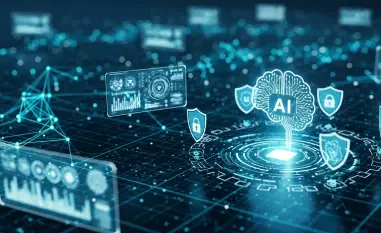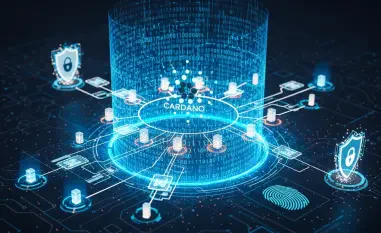In the realm of cybersecurity, where intricate webs of threat intelligence and analytical prowess intertwine, few experts stand out quite like Malik Haidar. With years of experience combating sophisticated cyber threats for multinational corporations, Haidar brings an unparalleled perspective on linking business strategies with cybersecurity. In this interview, Malik dives into a series of recent cybersecurity incidents, offering insights into hacking activities linked to drug cartels, vulnerabilities in Linux systems, and the unfolding implications of ransomware attacks. His analysis sheds light on the potential consequences and strategic responses necessary in today’s digital landscape.
Can you explain how the hacker hired by El Chapo’s cartel compromised the FBI Assistant Legal Attache’s phone and Mexico City’s camera system?
Absolutely, the situation was quite alarming. The hacker managed to infiltrate the FBI Assistant Legal Attache’s phone and Mexico City’s surveillance network. This was likely accomplished by exploiting vulnerabilities in the phone’s software or network infrastructure. Once accessed, the hacker gained the ability to monitor communications and movements in real-time. They used this intelligence to track interactions, posing a grave threat to informants and witnesses associated with the cartel. It showcases the dire consequences when critical security lapses remain unchecked, allowing organized crime to leverage technology against legal authorities.
What role did the information retrieved by the hacker play in the cartel’s actions against informants and witnesses?
The hacked information was pivotal for the cartel’s strategy. Having detailed intelligence on the FBI’s operations and knowing who they were meeting provided an advantage. It allowed the cartel to identify and intimidate potential informants, and in some cases, tragically eliminate those who cooperated with the authorities. This level of access created not only a security threat but also sowed fear among those considering aiding law enforcement. It’s a stark reminder of the power and responsibility that comes with handling sensitive information.
Could you provide more details about the case involving Mohammed Umar Taj and his actions against his former employer?
Certainly. Mohammed Umar Taj’s case is a classic instance of insider threats materializing. After parting with his employer on less than amicable terms, he accessed the company’s premises and altered login credentials, including multi-factor authentication settings. This disruption caused significant operational disturbances. It’s an example of the importance of comprehensive offboarding processes and the need for vigilance toward internal security protocols to prevent disgruntled employees from compromising company systems.
How were researchers able to intercept CAN data in the Renault Clio and gain full control of the vehicle?
The researchers from Pen Test Partners demonstrated this vulnerability by tapping into the car’s Controller Area Network (CAN) bus. Using simple tools, they intercepted the CAN data, which communicates between vehicle components. By mapping these signals to a game controller, they effectively commandeered the vehicle’s controls. This highlights the potential security flaws in connected vehicles and underscores the urgent requirement for robust automotive cybersecurity measures to prevent malicious exploits in more critical settings.
What are the implications of the critical Sudo vulnerability that went unnoticed for 12 years in Linux systems?
The Sudo vulnerability is a stark reminder of the complexities in managing software security across versions. This flaw allowed unauthorized users to execute commands with superuser privileges. The revelation that it went unnoticed for over a decade stresses the persistent challenge of legacy systems in cybersecurity. Organizations must prioritize regular updates and thorough audits to identify and patch vulnerabilities promptly, preventing potential exploits that could lead to extensive system compromises.
How was the Crylock ransomware developer’s criminal operation discovered, and what led to his sentencing?
The Crylock ransomware operation was dismantled through coordinated international law enforcement efforts. Authorities traced illegal activities back to the developer, implicating him in the deployment and economic exploitation of the ransomware across multiple computers. His sentencing was a result of concrete evidence, including the seizure of cryptocurrencies amassed from criminal proceeds. It reflects the success and necessity of cross-border cooperation in tackling sophisticated cybercrime networks.
Can you elaborate on the funding round for DataBahn.ai and their focus on agentic AI development?
DataBahn.ai’s recent funding success with $17 million in a Series A round underscores its commitment to innovating in the realm of data security. They are steering towards developing an agentic AI platform, aimed at enhancing enterprise data visibility and control. This direction represents a growing trend among companies seeking to leverage AI for proactive threat detection and remediation in data pipeline environments, signifying an evolutionary step in AI’s role within cybersecurity infrastructures.
What information was compromised in the ransomware attack on Radix, and how is the Swiss government responding?
The ransomware attack on Radix led to the exposure of data from several federal offices, which was subsequently posted on the dark web. In response, the Swiss government is conducting a thorough analysis of the compromised data and fortifying its defense protocols to mitigate future breaches. This incident highlights the vulnerability of critical health infrastructure to cyber-attacks and underlines the importance of implementing resilient security measures across such networks.
What were the individuals arrested in Spain specifically charged with in relation to selling personal information?
The individuals arrested in Spain were charged with illegally exfiltrating and distributing personal information belonging to high-ranking officials and journalists. Their activities included trading credentials linked to political entities in exchange for cryptocurrency. This arrest accentuates the ongoing battle against data privacy breaches and the illegal trade of sensitive information, demonstrating the need for stringent cybersecurity measures and law enforcement vigilance to protect against such threats.
How did the US Treasury’s sanctions against Aeza Group impact ransomware and malware operations?
Sanctioning the Aeza Group, a bulletproof hosting service provider, is a tactical move to cut off critical infrastructure support for ransomware and malware syndicates. By targeting the platforms that harbor these illicit activities, the US aims to disrupt the operational capabilities of malware groups like BianLian and others. The impact of these sanctions is multifaceted, potentially restricting access to secure servers and impeding money laundering opportunities for these criminal enterprises.
What details can you provide about the former DigitalMint employee under investigation for profiting from extortion payments?
The case involving the former DigitalMint employee revolves around allegations of unauthorized profiteering from ransom negotiations. While DigitalMint acts as an intermediary for ransomware negotiations, the employee in question is suspected of exploiting this position to divert payments for personal gain. This investigation underscores the sensitive nature of roles within cybersecurity firms and the importance of strict controls and oversight to prevent internal abuse and preserve ethical standards.
Do you have any advice for our readers?
I would advise readers to be ever vigilant and proactive about their cybersecurity practices. As threats evolve, so should our defense mechanisms. Regularly updating software, educating employees on security hygiene, and embracing advanced technologies like AI for threat detection can significantly bolster your security posture. Remember, cybersecurity isn’t just an IT issue; it’s a fundamental part of safeguarding the business ecosystem.













